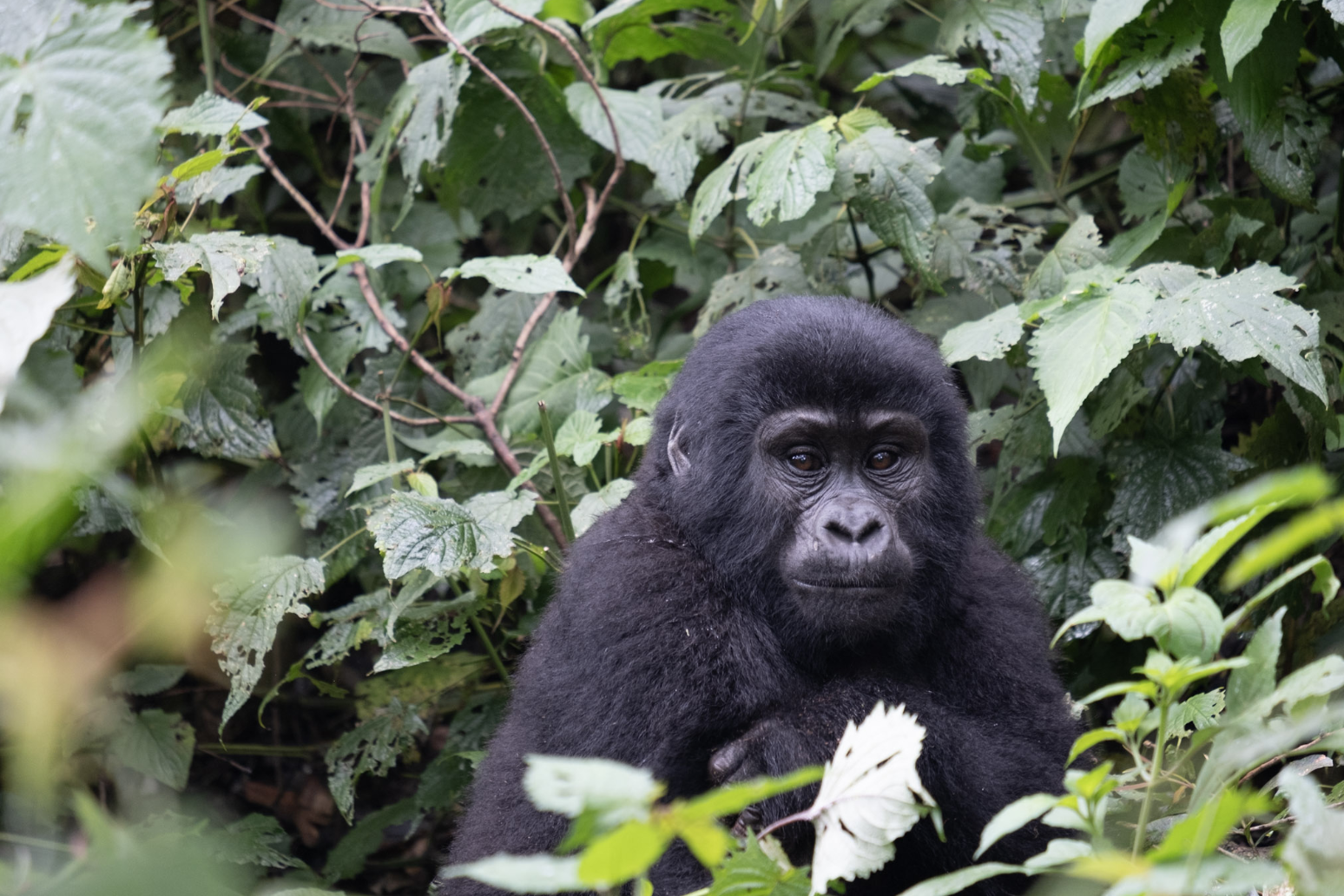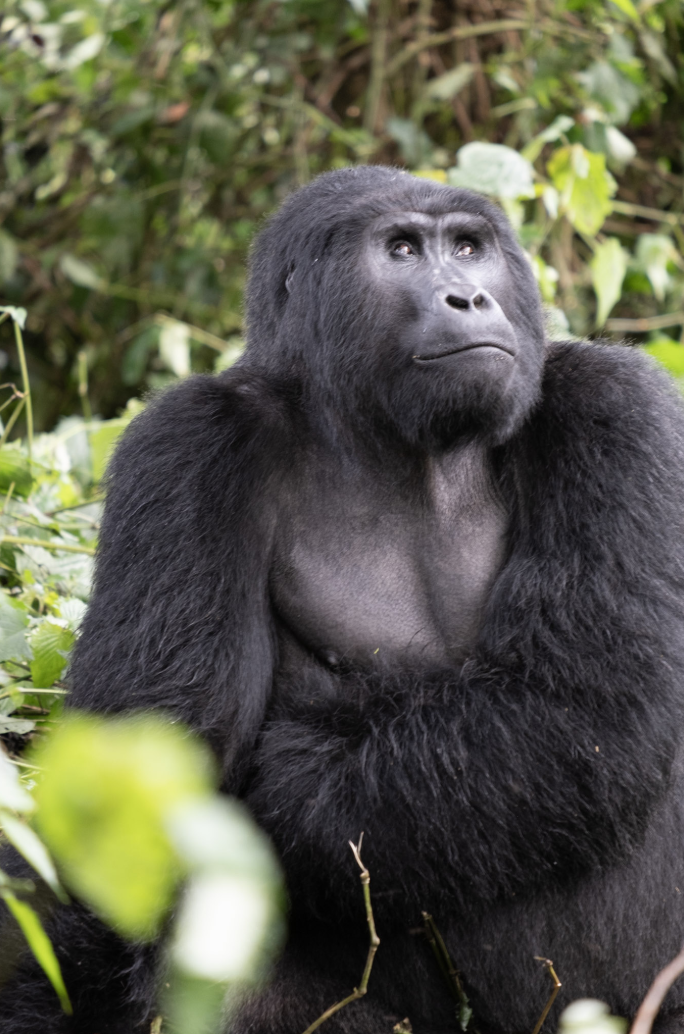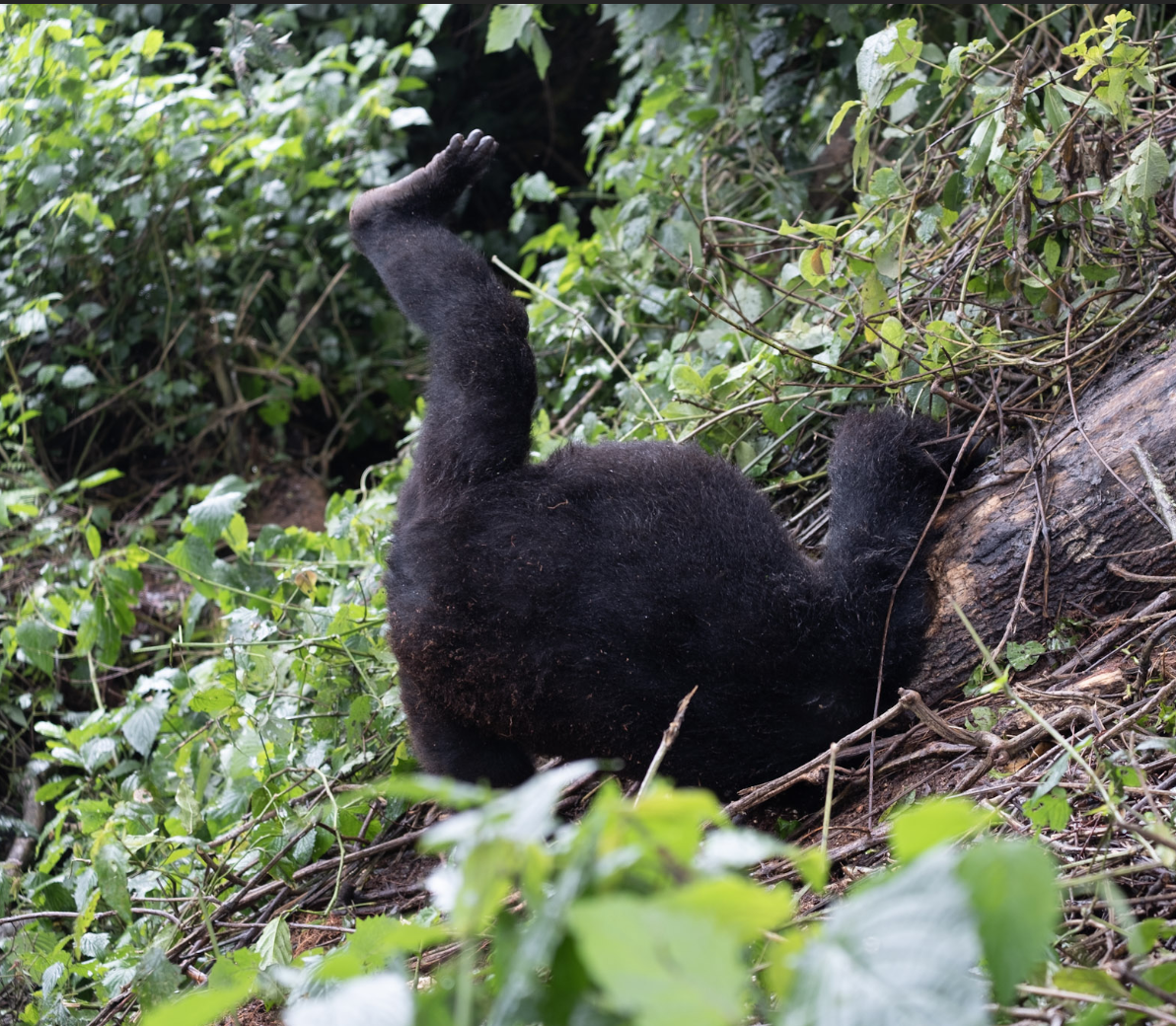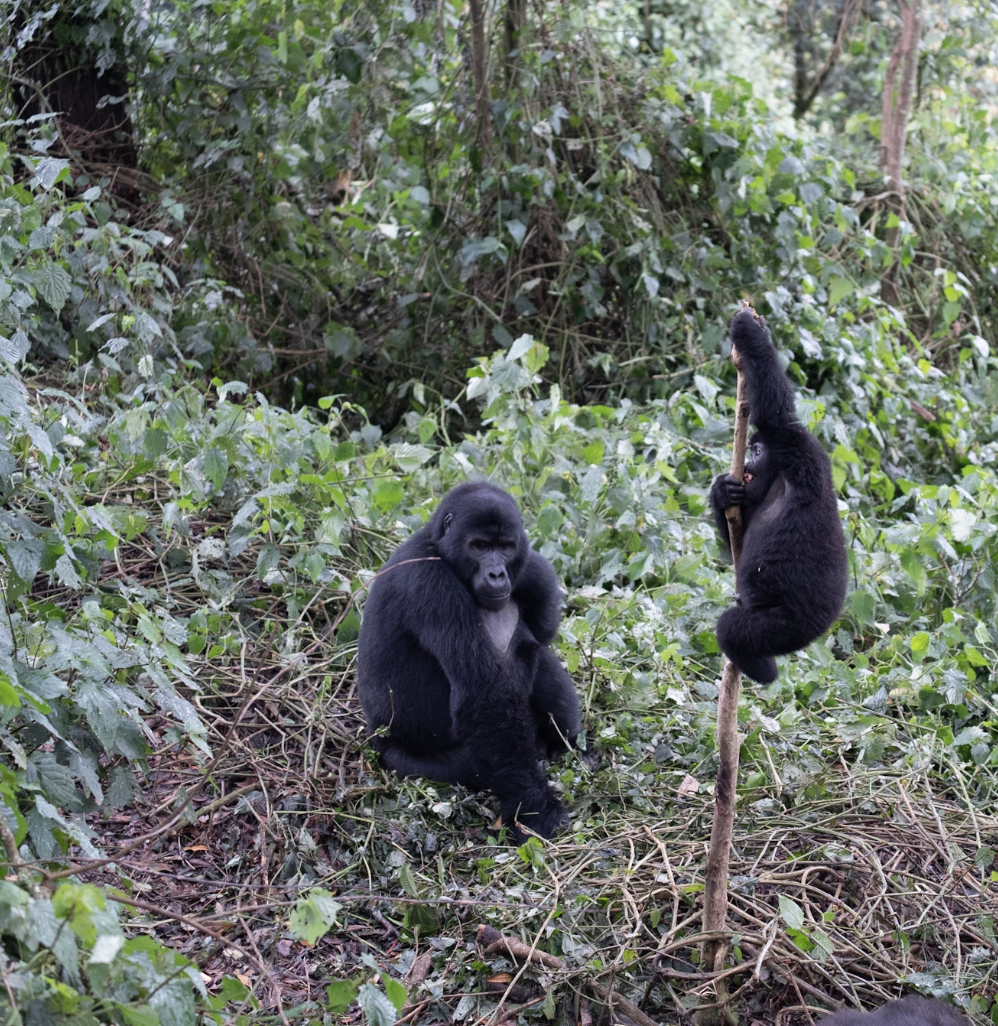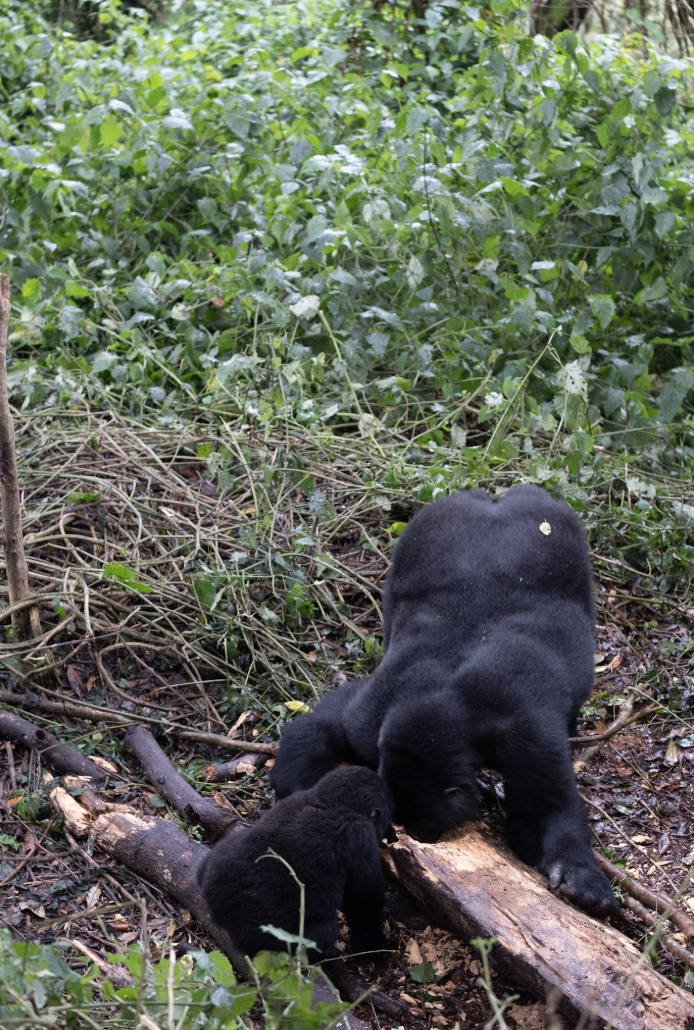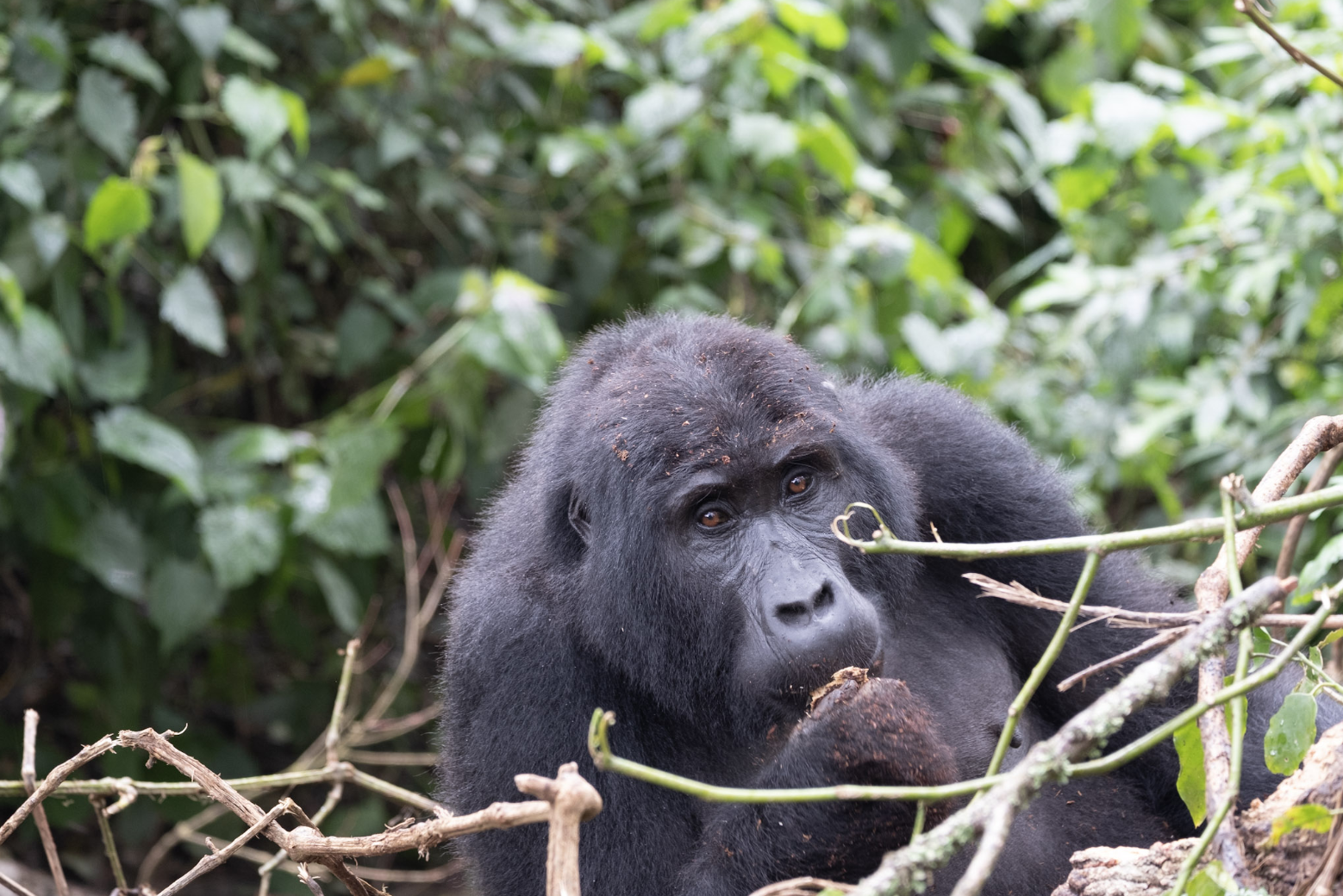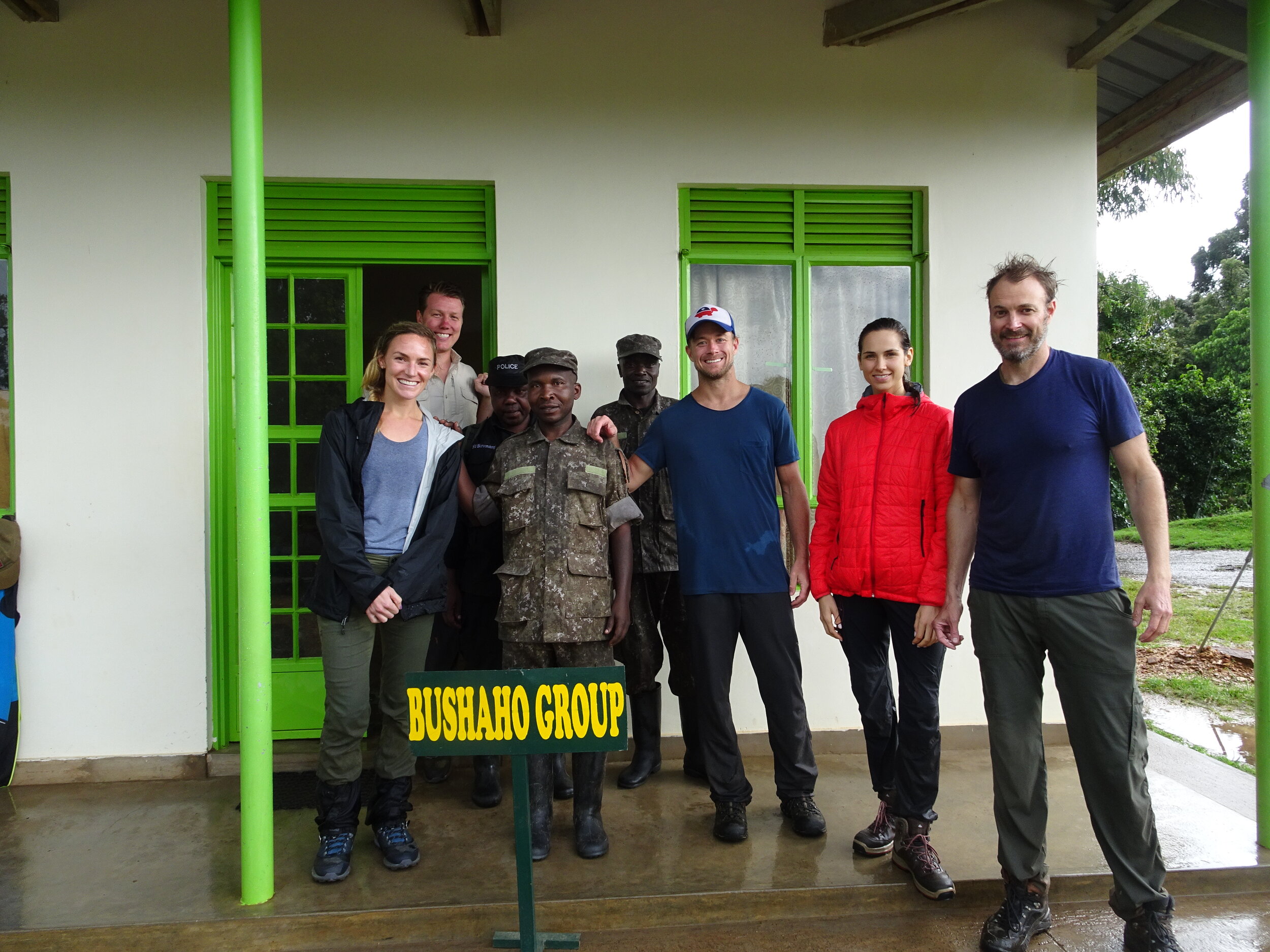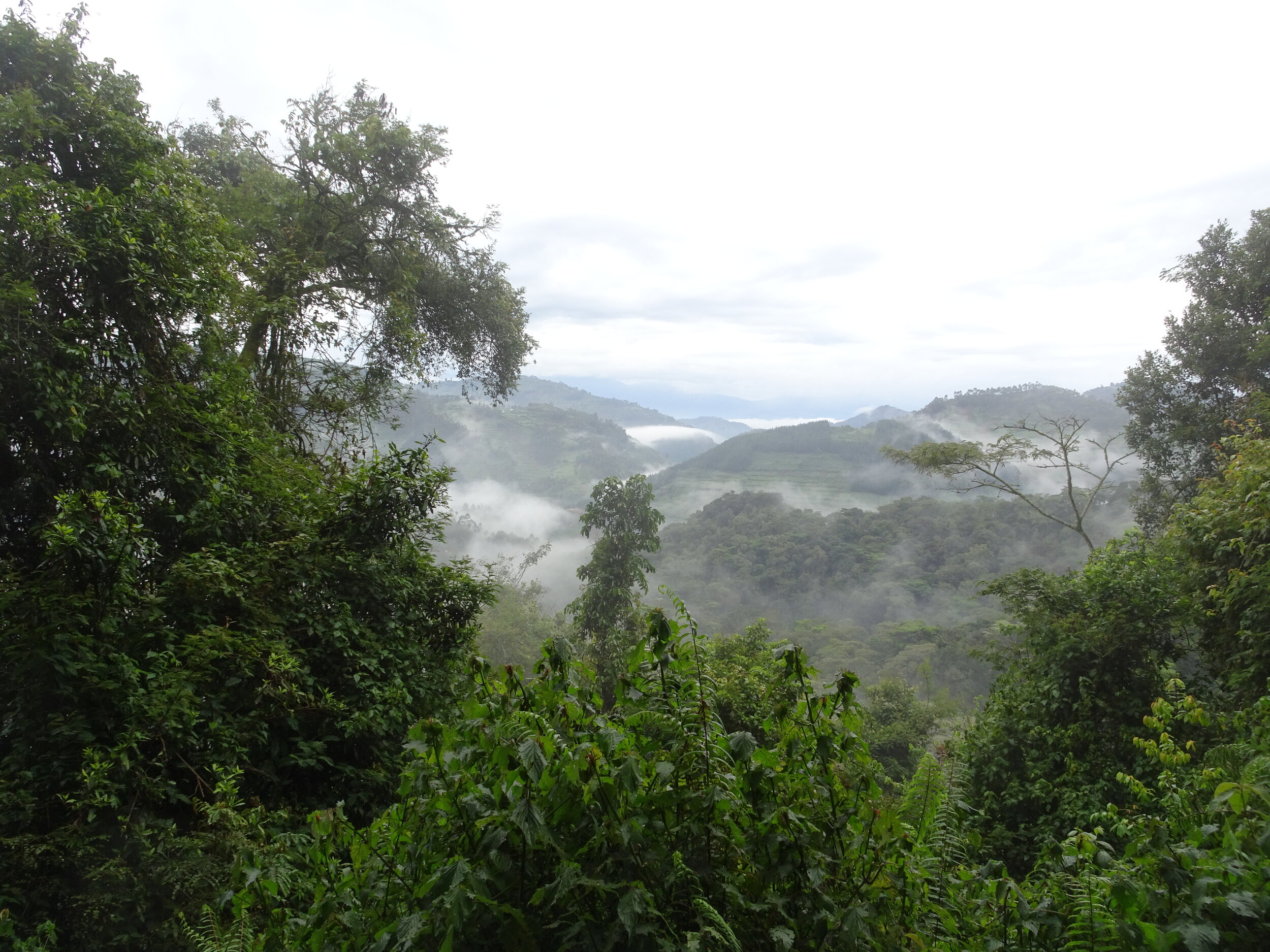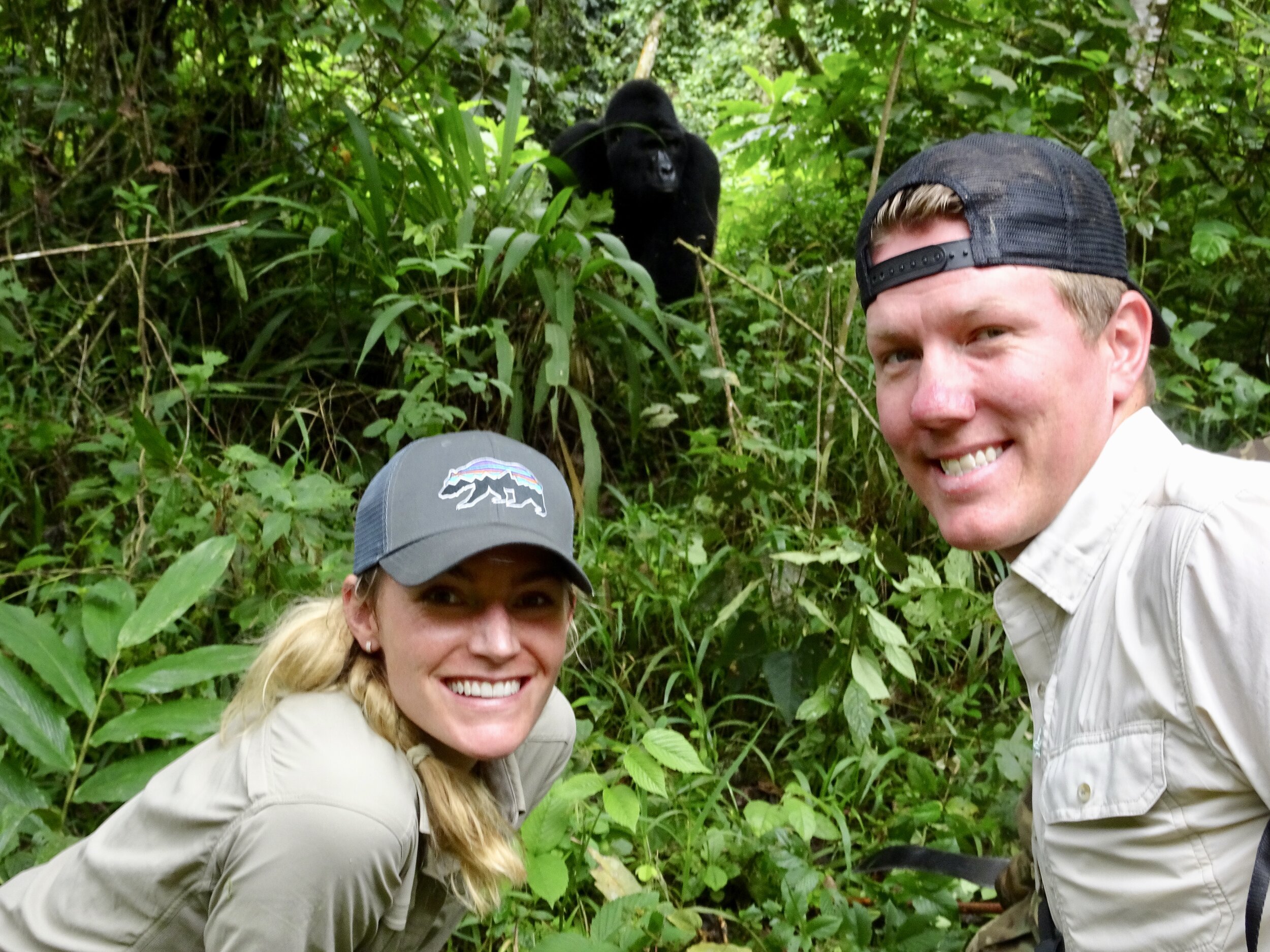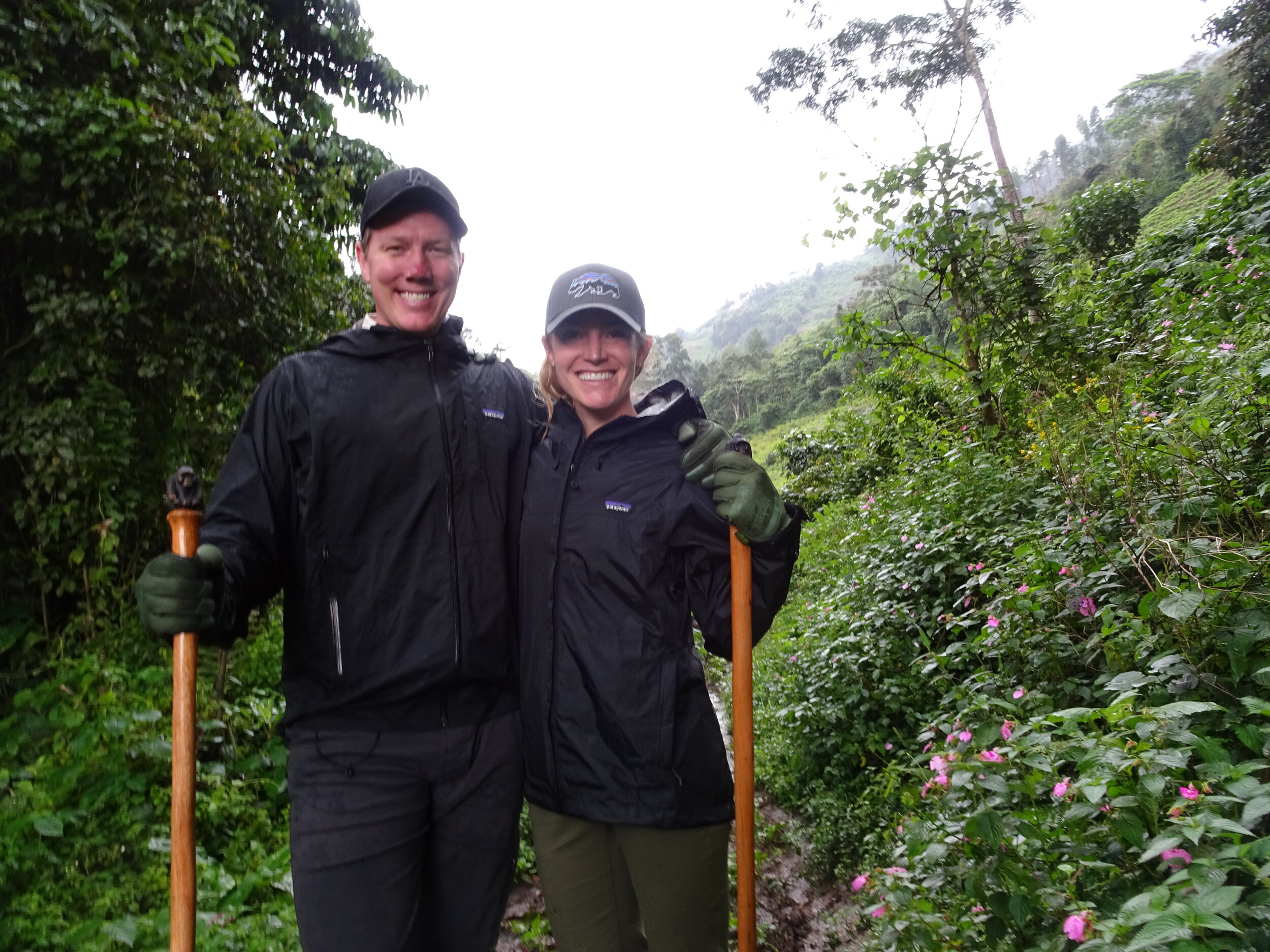Tracking Gorillas in Bwindi Impenetrable Forest
High in the jungle, at the intersections of Uganda, Rwanda and the Democratic Republic of Congo, the last remaining wild Mountain Gorillas roam free.
The Mountain Gorillas are some of humankind’s closest living relatives and it has been my dream to visit them. My interest deepened as I learned more about the gorillas’ individual characteristics and the social dynamics that resemble our own. The physical challenge and visceral anticipation of tracking through the jungle was also incredibly exciting. As my husband and I considered our next trip together, there was no question that this was something we wanted to share.
We set a date and purchased tracking permits for Bwindi Impenetrable Forest. And then in November, off we went to Uganda.
After a long journey, we arrived at Clouds Mountain Gorilla Lodge and were welcomed on the front steps by the managers, a husband and wife team from South Africa. We settled into our cottage with views over the Virunga volcanoes of neighboring Rwanda. After dinner in the lodge, we returned to our cottage to find a cozy fire roaring and hot water bottles warming the bed.
The next day began with lots of clothes—hiking pants, waterproof boots, walking sticks, baseball caps, gardening gloves, layered tops, rain jackets, and gaiters. We fueled up with a big breakfast, popped a packed lunch into a Patagonia bag, and drove to the Bwindi Ranger Station for a briefing.
We were assigned to a group and departed the station around 8:30am. Ours was a small group: in the lead, a security guard with an AK47 and rain boots, followed by our guide and ranger, our porter, and five tourists, including ourselves. A second security guard followed up the rear.
Our group hiked for nearly 2.5 hours, following the call of a team of trackers that check in on the gorillas on a daily basis. After some time, we stopped and our guide put his hand to his lips— “quiet now,” he said. “The gorillas are very close.” My heart jumped and there was a sense that this was really happening.
My first sighting of a gorilla in the wild was of the silverback named Bahati— ”Luck” in Swahili and named so due to his size and the provenance of his family. As a younger black back—adolescent male—from a neighboring clan, he left the group and stole his favorite females away to start his own family. A very lucky gorilla indeed.
Bahati reclined at the base of a leafy tree, snacking on green shoots, a delicacy to these vegetarians. The trackers motioned us forward and our little group crouched down, wide eyes following the large male’s every move. A small baby appeared from the underbrush and beat his little chest before tumbling towards his father, who ignored the little fur ball and continued to munch.
We observed the two for what felt like a moment before Bahati began to move. Over the course of the next hour, we followed him and his family on foot, hands, and rear ends through the jungle, our guides hacking vegetation when they could. It began to rain, signaling the the end of our time with the family and we watched them disappear into the forest.
The hike back to the station was quiet. Each one of us thinking about what we’d just experienced . The next day, my husband and I returned to the forest, this time to observe a family still going through the process of familiarization with humans. After hiking into a remote area of the forest, we spent four hours with a family of eleven. It was one of the most extraordinary experiences and a gift to share with each other.
I had anticipated a strong emotional response to the gorillas. It is incredible to observe firsthand their tendencies—nursing babies, taking turns (reluctantly), showing deference to age and seniority, the curiosity of the adolescent gorillas. But what I hadn’t expected or prepared myself for was the integrated approach to conservation that has supported the gorilla’s comeback—and brought opportunities to the local communities— against all odds.
The gorilla’s habitat is surrounded by some of the world’s most densely populated areas where communities barely get by with sustenance farms. Until recently, gorillas were a nuisance that occasionally destroyed crops—and devastated families. It was incredible to see how tourism and all its trappings have provided enormous opportunities for local communities and in turn how this shift in perspective has impacted the future of the gorillas.
Through strengthened conservation efforts and tourism, communities surrounding gorilla habitats are able to find sustainable opportunities in conservation, education and hospitality. The result is a better quality of life for both humans and gorillas.
Getting to Bwindi is a journey in itself. We flew into Entebbe, the former capital of Uganda and the site of the only international airport in the country. The sprawling lakeside city is a patchwork of red-roofs and dirt roads by air, and worth a day’s visit if only to experience it’s impressive gardens and beachside cafes along Lake Victoria.
From Entebbe, a flight to Kisoro aboard a small Cessna prop plane. Flying above the country at 7,000 ft, we saw fisherman in small wooden canoes dotting Lake Victoria, massive Dutch greenhouse operations, tiered tea farms and lots of maize. After about an hour, we landed smoothly on a dirt airstrip at our final destination and were met by a cheerful driver, Abdullah, whose 4WD skills would prove critical over the next few days.
The next two and a half hours is through Kisoro and its series of small shops, open-air restaurants and markets, onto red clay roads hewn from the side of mountains, with cliff sides offering jaw-dropping views of misty mountains, small farms, and alpine lakes. Abdullah maneuvered through the muddy tracks, getting out every now and then to lock the 4WD into place.
The Mountain Gorillas are some of the most critically endangered species and as such, gorilla tracking is extremely regulated. Although expensive, the funds raised go directly to support local Wildlife Authorities and to support the communities that protect these special creatures and their habitats. Visitors to Bwindi are required to purchase permits, which range from $600-$1,500 per person per visit. Group sizes max out at 8 visitors, or 100 visitors in the park per day. Private experiences are also available for groups and families.
For more information, please contact leslie@leslieswansontravel.com





